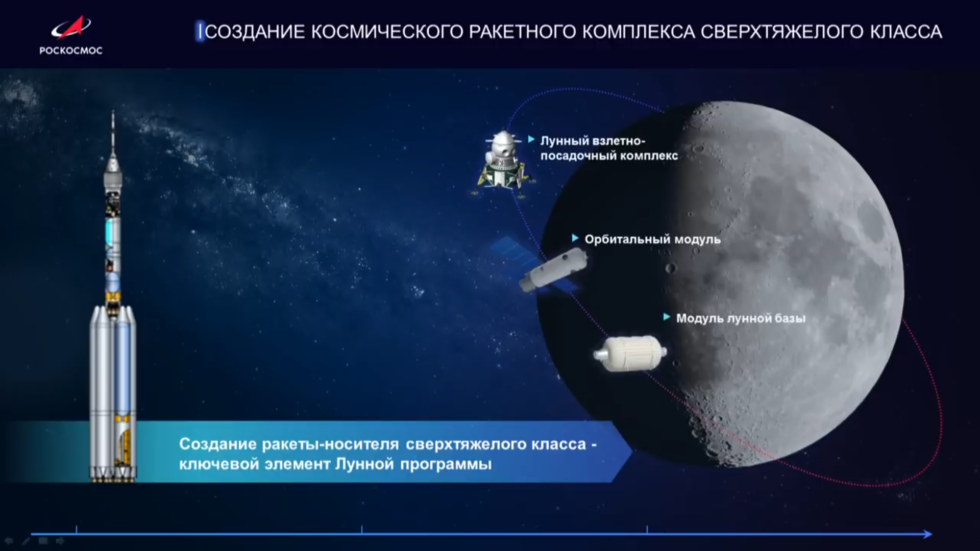Ars Technica obtained slides from a speech from the head of Russia’s state space corporation, Dmitry Rogozin, which outlined in detail a plan to get cosmonauts to the moon by 2030.
Under the plan outlined by Rogozin, the country will initially develop a new “Super Heavy” booster with a capacity of 103 metric tons to low Earth orbit and 27 metric tons to Lunar polar orbit. This is roughly equivalent to an upgraded version of NASA’s Space Launch System, known as Block 1B.
The plan includes the development of the “Federation” spacecraft by 2022, with its first flight to the International Space Station by 2023. Deep-space flights of this spacecraft would follow in the mid-2020s, along with a return of lunar soil to Earth using the Luna-Grunt probe in 2027.
Finally, in 2029, crew flights to lunar orbit would begin, along with flight testing of a lunar lander and an inflatable lunar base module. The crew landing would take place in 2030, although Rogozin said he would like to move those dates earlier if possible.
Ars notes that “a Russian attempt to land humans on the Moon a decade from now would set up an extraordinary race among that country, NASA’s Artemis Program, and China’s lunar ambitions.”

